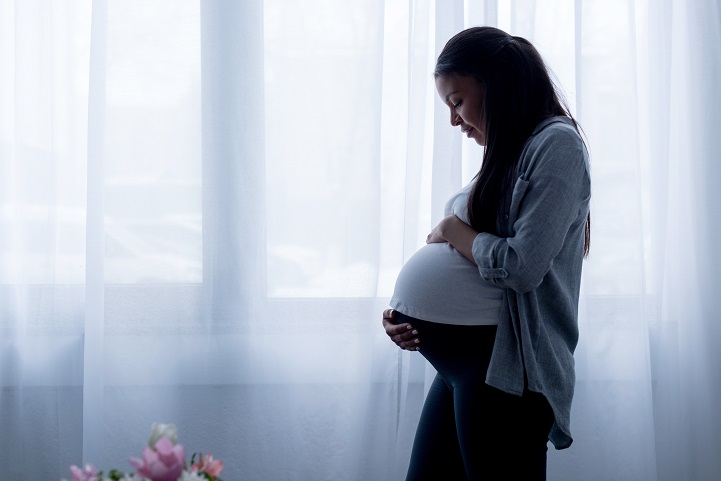
Since UFE preserves the uterus, one of the key concerns with the procedure is the potential for pregnancy after UFE. In the past, there was limited information and studies on the effects of UFE on fertility or the likelihood of conceiving after UFE. However, with the growing body of research and our own experience with patients successfully becoming pregnant after UFE, we are now able to offer more informed insights.
In a 2020 study from NIH, they state:
It is clear, however, that pregnancy is attainable for females following UFE and many of these pregnancies proceed uneventfully to successful deliveries.
Although the study sizes are modest, the findings are encouraging for women looking to conceive and wanting to avoid a hysterectomy. As further research emerges, we anticipate additional studies will support these promising results.
A myomectomy is often recommended when fibroids are believed to affect fertility or pregnancy. It is important to remember that this procedure is still a surgery. The likelihood of needing a blood transfusion is higher than with a hysterectomy, and if the surgeon cannot control bleeding, a hysterectomy may be necessary. Fibroids may also return after a myomectomy, which is rare with UFE, as the procedure addresses all fibroids, large or small, in one session.
We do stress that for those who desire a pregnancy after UFE, success is based on individual situations and should be discussed prior to deciding on UFE with your medical doctor.
What Is Uterine Fibroid Embolization?
Uterine Fibroid Embolization (UFE), also known as Uterine Artery Embolization (UAE), is a non-surgical, outpatient procedure designed to shrink uterine fibroids. The procedure involves blocking the blood supply to fibroids, causing them to shrink and relieving symptoms such as heavy bleeding, pelvic pain, and bloating.
Key benefits of UFE include:
- Minimally Invasive: No general anesthesia or stitches are required.
- Quick Recovery: Most patients return to normal activities within one to two weeks.
- Preserves the Uterus: Unlike a hysterectomy, UFE allows women to retain their uterus and maintain the possibility of pregnancy.
But does this actually mean you can conceive and have a healthy pregnancy afterward?
Can You Get Pregnant After UFE?
Yes, many women can get pregnant after Uterine Fibroid Embolization (UFE). There are documented research reports showing that UFE hasn’t significantly affected fertility, and many women have successfully conceived and carried pregnancies to term after the procedure. Recent studies and patient outcomes suggest that UFE can preserve fertility while effectively treating fibroids. However, it is important to remember that every case is unique, so as with all medical decisions, consult with your doctor to discuss your pre-existing conditions, current health, and fertility goals. Your healthcare provider can offer the best guidance for your situation.
See video below on a doctor’s personal experience and perspective on getting pregnant after UFE:
Choosing UFE to retain your fertility should be a treatment option discussed during your journey to fibroid symptom relief.
Schedule Your Appointment Online
Pregnancy After Uterine Fibroid Embolization : Stories from Real Patients
At USA Fibroid Centers, we have patients that share their successful pregnancies after UFE. One notable success is Yvette Foy, who shared the joyful news of delivering a healthy baby after her treatment. These stories highlight how UFE can support fertility when provided by experienced specialists. We credit this to our doctors’ expertise in ensuring candidacy for UFE by understanding the patients’ individual diagnosis and future plans.

Click to See More Post-UFE Pregnancies
Risks and Concerns About Pregnancy after Uterine Fibroid Embolization
Some common risks and concerns implicated:
- Reduced Uterine Capacity
- Miscarriage and Preterm Birth
- Low Birth Weight
- Scar Tissue Formation
Variable factors and previous medical history can contribute to risks including: advancing maternal age, weak uterine walls, previous miscarriages, and other pre-existing conditions.
A study from the Radiological Society of North America:
“Our findings show that UFE is a fertility-restoring procedure in women with uterine fibroids who wish to conceive, and pregnancy following UFE appears to be safe with low morbidity.”
Another study from the NIH concludes:
It is clear, however, that pregnancy is attainable for females following UFE and many of these pregnancies proceed uneventfully to successful deliveries.
Postponing fibroid treatment until after birth can also come with risks. Fibroid size, volume and location can impact both fertility and pregnancy outcomes and should be discussed with a medical professional.
If you decide to go forward with Uterine Fibroid Embolization before conception, we recommend discussing potential risks with your doctor.
How Long After UFE Can You Get Pregnant?
Patients are recommended to wait 6 months following UFE before attempting to get pregnant, as the most significant decrease in fibroid size and ischemia happens within the first 6 months after the procedure. This wait can help enhance pregnancy safety.
Schedule Your UFE Consultation Today
If you are currently living with uterine fibroids, we understand that you may have concerns about fertility and pregnancy. We encourage you to contact one of our top-rated fibroid specialists and discover the best treatment course for you. Our experts are readily available to discuss Uterine Fibroid Embolization, fertility, and pregnancy after fibroid treatment.
When you are ready, you can schedule an appointment online. We offer the ease and convenience of 90 clinic locations nationwide, and accept most insurances. We look forward to meeting you!



